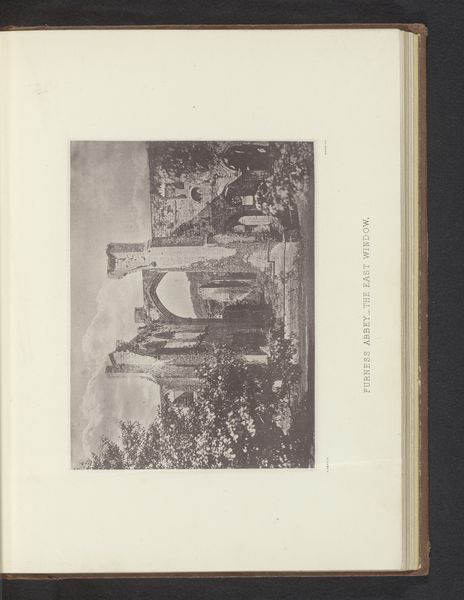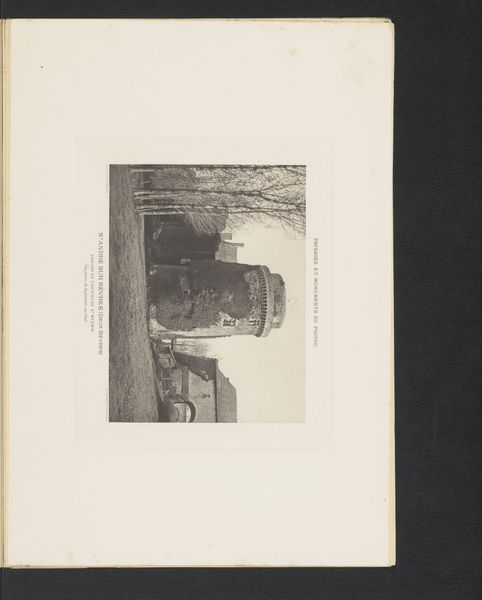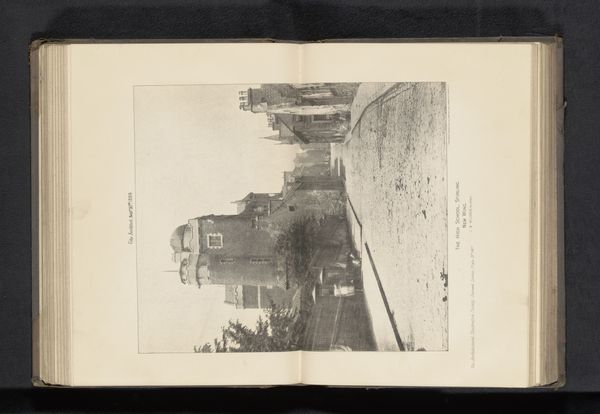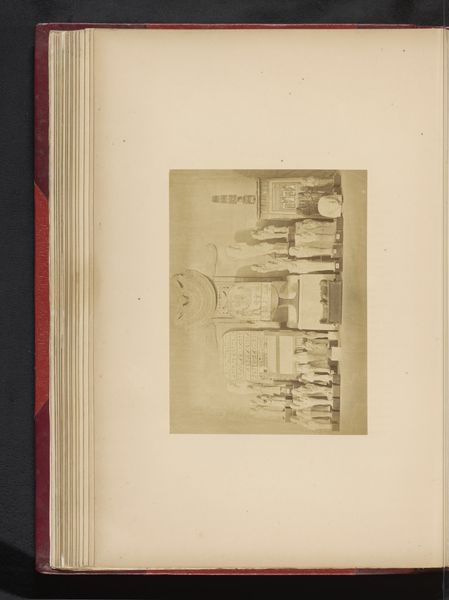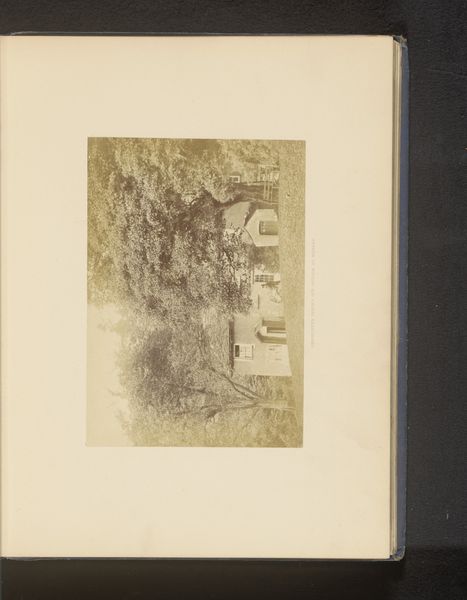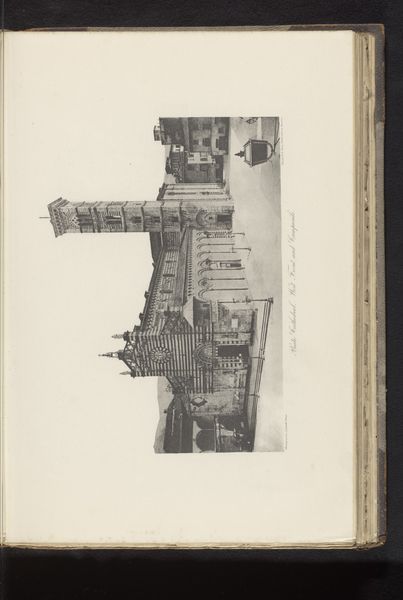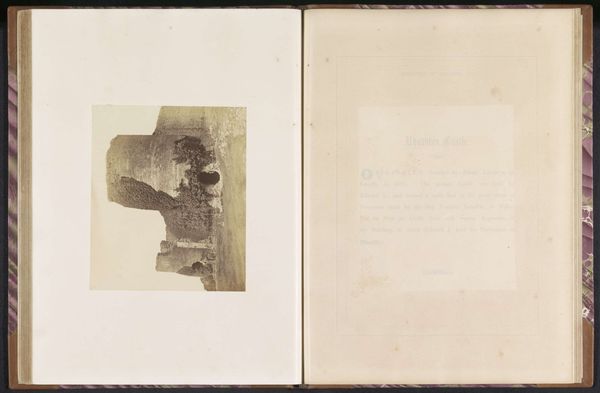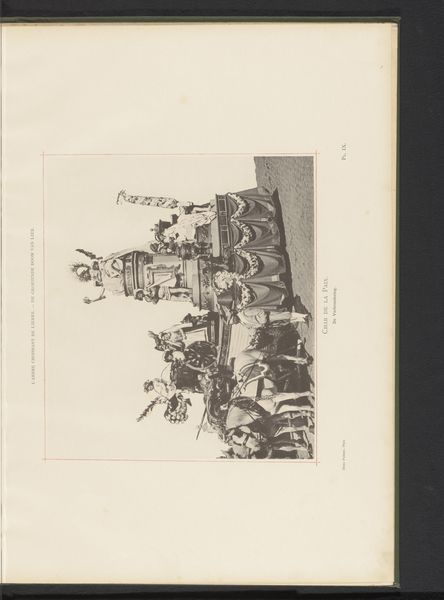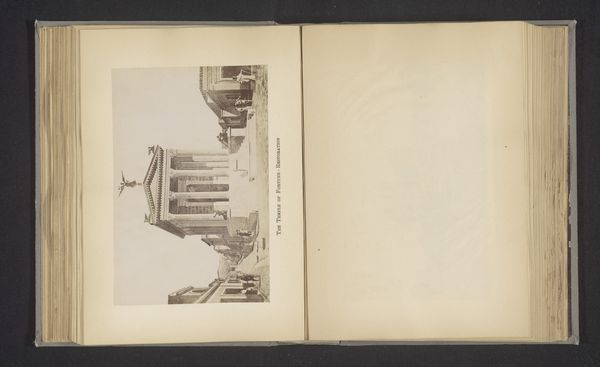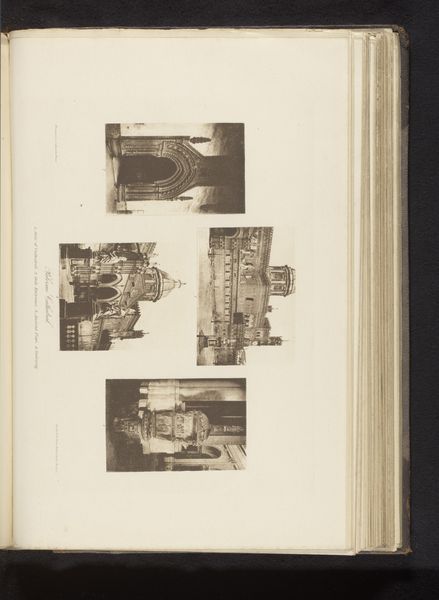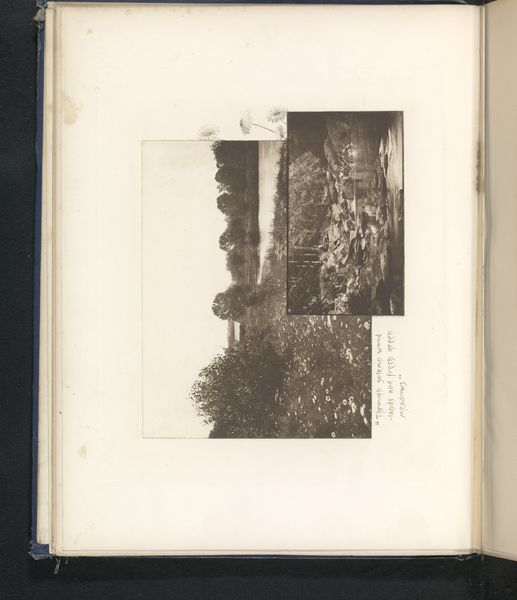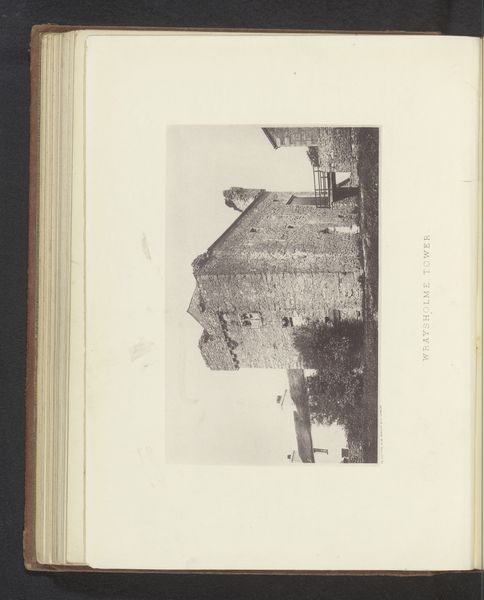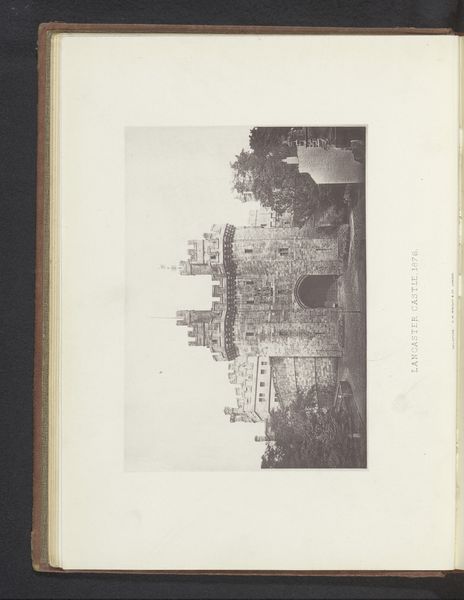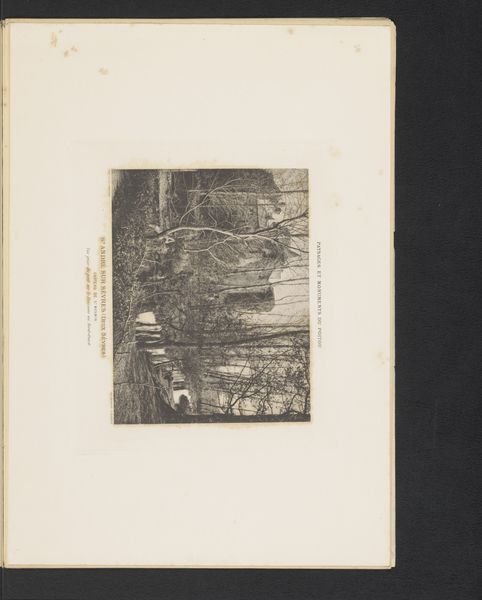
Dimensions: height 166 mm, width 214 mm
Copyright: Rijks Museum: Open Domain
Curator: Before us, we have an engraving by Jules Robuchon, dating from before 1888, titled "Gezicht op Château de Mesmin in Saint-André-sur-Sèvre, Frankrijk"—a view of the Château de Mesmin in France. Editor: Wow, that castle looks like it has seen things, you know? It emanates some quiet mystery; like all those stones are whispering old tales if you listen closely. The way it looms in monochrome makes it feel timeless. Curator: It's the process of engraving that really defines the final piece. Robuchon has skillfully used a variety of line weights and hatching to produce tonal depth, not just depict the architecture accurately. Think of the laborious act of translating stone to metal, then metal to paper! The human intervention mediating our view. Editor: Yes, I am visualizing that entire act and the human effort put to it, right from building the castle to printing its copy...but the result is rather dreamy, wouldn’t you agree? It almost softens the harsh angles and adds this wistful feel. You get the feeling of isolation and nostalgia. Curator: Absolutely, and notice how Robuchon uses the figures in the foreground. It is likely for a purpose! He's clearly positioning ordinary people against the backdrop of aristocratic architecture. Is he maybe questioning social hierarchies, access, or labor's relationship to power? Editor: Well, I find the human presence brings it all back to earth – this stark scene of an isolated monument. Perhaps, he intended that: the figures serve as some relatable contrast. Curator: Indeed! The engraving process itself highlights how the mechanical reproduction democratizes imagery. It makes art and architecture accessible beyond its original elite context through printmaking, and therefore connects laborers with the grand estate depicted, both in image and ownership. Editor: Seeing it through the lens of its materials and context, shifts the perspective, right? It’s more than stone; it’s the artist's interpretation, his perspective, and that of everyone who’s ever seen it after, colored with emotions. Curator: Precisely. Reflecting on Robuchon’s print, it becomes so evident the power in viewing artworks not as isolated icons, but products of their time. Editor: And yet, each holds a resonance unique to those experiencing it anew.
Comments
No comments
Be the first to comment and join the conversation on the ultimate creative platform.
